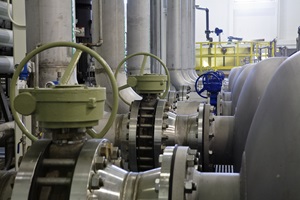As part of an international consortium, we are actively involved in a research project known as E-Klär, which aims to develop applications for resource-efficient and energy-optimised wastewater treatment plants (WWTPs) in the future. The project commenced on 1 May 2014.
Due to changing economic, technical and social conditions, future municipal WWTPs will face new challenges. Besides the elimination of nutrients, they’ll gradually have to incorporate further treatment processes, such as removal of micro pollutants and pathogens. With respect to future mitigation of resource scarcity, energy in wastewater and sludge will need to be used and substantial resources will need to be recycled.
The EUR 3 million research project ‘E-Klär’ was conceptualised to develop model-based integration of innovative treatment technologies for transformation processes. The overall objective of the project is the development of a modular system of processes for a future wastewater treatment. The processes focus on energy- and resource-efficiency for cost-optimised future concepts. The developed modules will be included in a software product to support the transition process from existing to prospective WWTPs.
Funded by the German Federal Ministry of Education and Research (BMBF), E-Klär lies within the framework initiative ‘Future-oriented Technologies and Concepts for an Energy-efficient and Resource-saving Water Management (ERWAS)’. The interdisciplinary project consortium consists of ten partners from the fields of science, industry and water resources management. The Institute of Environmental Engineering in Germany’s RWTH Aachen University has taken the lead in executing the project.
Our role in E-Klär 
Our task in the project is the development of:
- a substance flow model
- an energy flow model
- an operation cost model
In the first step, these models will be implemented in our widely known WWTP process software package WEST. The coupling of the three models will allow for analysis of the plant wide energy production and consumption, in relation to the operational costs. It will thereby build the basis for the WWTP transformation process.
In the second step, we’ll use the new WEST model for operational support on a WWTP, which is owned and operated by one of the project partners. WEST will be used for operational optimisation of daily energy consumption and production. Current operational data from the WWTP will be included in WEST on request for short-term forecasting studies.